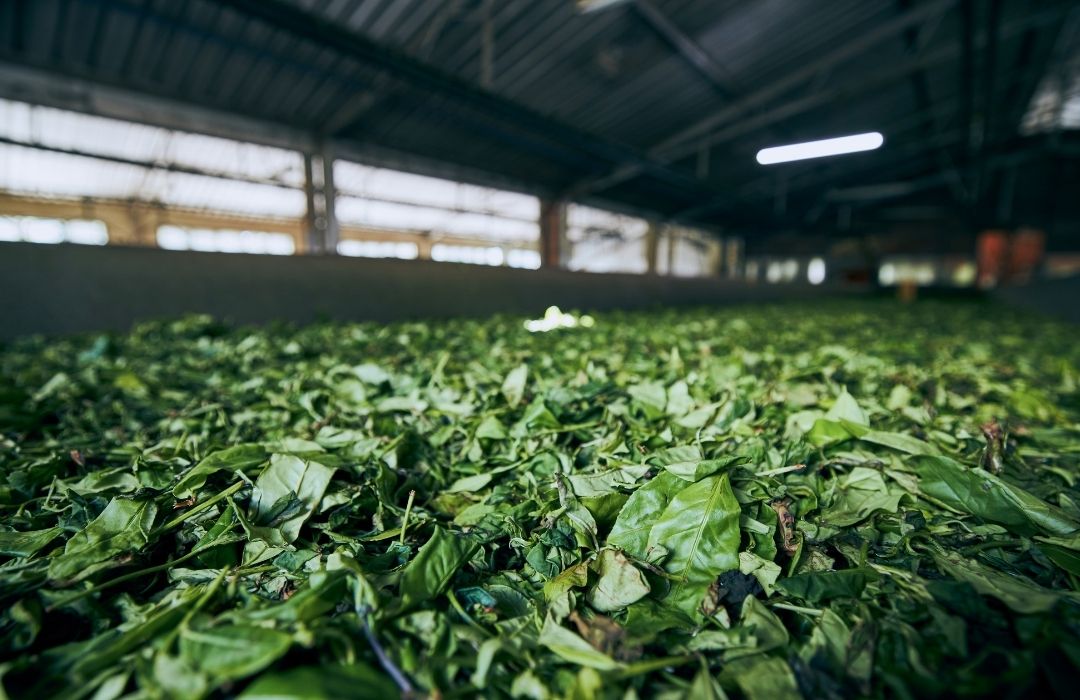
How is tea produced?
Whether you enjoy a refreshing iced tea or a hot cup of tea, the production method of this beverage makes a difference in flavors and aromas. From harvesting to drying, tea leaves undergo changes that can mean the difference between a delicate, sweet white tea and a robust, potent black tea. The incredible variety of flavors and aromas is not due to the use of different plants; in fact, these unique characteristics of tea arise from the processing methods of the tea leaves themselves from the Camellia sinensis plant .

Tea production methods
There are two main methods for producing different types of tea : orthodox and unorthodox , or CTC (crush-tearl-curl). Each method produces a very different final product.
Orthodox method
Whole Leaf: The Orthodox method uses a process that preserves the integrity and flavor of the whole tea leaf at all stages of production.
Leaf rolling and shaping: Whole tea leaves are carefully rolled or shaped into various sizes and styles depending on the type of tea being produced. Traditional processing is used to produce various styles of loose leaf tea, including white tea, green tea, blue tea, oolong tea, and black tea.
Artisanal method: Since it is an artisanal process that is often carried out by hand, the same type of tea can vary greatly depending on the producer who makes it.
Complex flavor: The orthodox method is more expensive and time-consuming , but results in an attractive full-leaf tea with a nuanced flavor and aroma.
Unorthodox method or CTC
Crushed Leaf: This method, known as Crush-Tear-Curl (CTC), produces small, intentionally broken pieces of tea leaf that are then shaped into grains.
Designed for commercial tea bags: The CTC method was originally designed to produce a full-bodied, intensely flavored black tea that could be packaged in tea bags and that would blend well with the milk and sugar commonly added to tea.
Industrial method: CTC is primarily a machine-based production method developed to eliminate some of the labor-intensive and manual steps of the orthodox artisanal method, in order to speed up the time to market of black tea and reduce its production costs.
Plain Taste: The CTC process lacks the ability to produce a wide range of teas with different aromas and flavors. Some green teas can be produced using this method, but not white teas or oolongs. Leaves processed using this method become excessively oxidized and immediately begin to lose their essential oils. Therefore, the nuances and flavor notes of the tea cannot be controlled, resulting in a product with a monotonous flavor.

The orthodox method of organic teas Replantea
All Replantea brand teas are produced using the traditional artisanal method, using organic tea leaves. These are the basic steps followed to produce our organic teas:
1. Harvesting: Harvesting methods vary greatly depending on the type of tea being produced and the region. Typically, the youngest leaves and buds are used to produce white and green tea, while the mature leaves are used to produce oolong and black tea.
2. Withering: Immediately after being picked, the tea leaves are transported to the factory where they will continue the withering process. Freshly plucked tea leaves are fragile and can break easily. Therefore, as the first step in the process, the leaves are dried for several hours to wither and lose some of their moisture content. Withering softens the tea leaves, making them pliable and supple so they won't break during the remaining steps of the process.
3. Rolling: This stage involves rolling the leaves to break down their cellular structure and release the aromatic oils they contain. By rolling the soft leaves and shaping them with a machine, the cell walls of the leaf are broken, releasing enzymes and essential oils that will alter the flavor of the leaf. Rolling exposes the chemical components of the tea leaves to oxygen and initiates the oxidation process.
4. Oxidation: Oxidation is a chemical reaction that alters the flavor of tea and helps processed tea develop its final appearance and color . The length of time tea leaves are allowed to oxidize, or are exposed to oxygen, determines the type of tea the leaf becomes. Black tea leaves are highly oxidized and are therefore the darkest and most intensely flavored. Blue teas, or oolong teas, vary in oxidation levels and therefore have different colors and flavors depending on the degree of oxidation. Green and white teas are lighter in color and flavor because they do not undergo oxidation.
5. Firing: Firing begins the final drying process . Once the leaf has oxidized to the desired level, we apply heat to the tea leaf to halt the oxidation process and further reduce the leaf's moisture content, so the tea leaves can be stored without spoiling. Green and white teas are fired before oxidation begins to prevent it. Depending on the type of heat applied, firing can also impart certain flavor characteristics to the final tea. For example, Japanese green teas are steamed and have a lighter, grassier flavor, while Chinese green teas are fired in large pans, giving them a more robust, roasted flavor.
6. Grading: Once the tea leaves have dried, they are visually sorted into several groups of similar size and color to create different batches of tea. These batches of tea are given different industrial grades, which rate the tea's visual appearance based on the number of whole leaves, broken leaves, or unopened tea buds in the batch.
MORE ARTICLES ABOUT THE WORLD OF TEA
Tea for Beginners: Which to Choose and How to Prepare It >>
Share




















